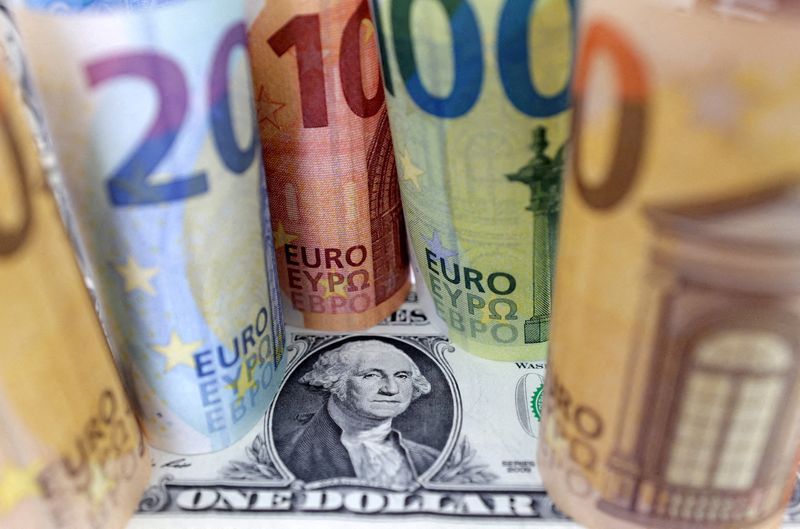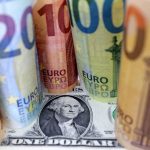TOKYO/LONDON (Reuters) -The euro steadied on Monday, recovering overnight losses that stemmed from projections from France’s election pointed to a hung parliament, while the dollar remained soft.
The dollar remained on the back foot following surprisingly soft U.S. payrolls data on Friday, which boosted bets for the Federal Reserve to soon start cutting interest rates.
Sterling rose to a 3-1/2 week top versus the dollar and the euro, building on the gains following the Labour Party’s landslide election victory last week, which ended 14 years of Conservative rule.
The Australian dollar benefited from greenback weakness to push to a six-month peak.
The yen held above last week’s nearly 38-year trough to the dollar, but weakened from the day’s highs.
The euro was flat at $1.0838, having earlier slid as much as 0.4%, as investors weighed up the consequences of a hung French parliament.
That was among several surprises in projected results, including the likely first-place finish for the leftist New Popular Front (NFP) alliance, and last-place showing for Marine Le Pen’s nationalist, eurosceptic National Rally (RN), which had been the frontrunner going into Sunday’s vote.
Polling agencies forecast the left would get 184 to 198 seats – well short of the 289 seats needed for an absolute majority. President Emmanuel Macron’s centrist alliance was expected to get 160 to 169 seats, and the RN and its allies 135 to 143 seats.
“The shock of a far-right party gaining a majority was avoided in the short term, but the rise of left-wing parties and increasing political uncertainties could raise concerns over French fiscal deficits and euro zone stability in the medium term,” said Ken Cheung, director of FX strategy at Mizuho Securities.
The euro weakened slightly against the Swiss franc, which had been an early beneficiary of investor concern around the implications for the wider euro zone from potential instability in France.
The single European currency was last down 0.1% at 0.9705 francs, its lowest in a week, but remained within sight of last week’s one-month high.
“In our view, these election results are unlikely to have a long-lasting negative impact, given there will be essentially no significant change in the political situation in the National Assembly,” Nomura senior macroeconomist Andrzej Szczepaniak said, adding that euro/Swiss should “grind towards parity” over the summer.
The dollar index, which measures the U.S. currency against the euro, sterling, yen and three other major rivals, was flat at 104.91, licking its wounds after a nearly 1% slump last week, exacerbated by Friday’s softer U.S. jobs market reading.
Traders currently set about 76% odds for a rate cut at the Fed’s September meeting, up from 64% a week ago, according to the CME Group’s (NASDAQ:CME) FedWatch Tool. A subsequent cut is predicted by December.
The dollar was last up 0.14% at 161.04 yen, still below last week’s high of 161.96.

Sterling was steady at $1.2814, after earlier rising to $1.2820 for the first time since June 12.
The Aussie dollar was down 0.16% at $0.6737, having earlier edged as high as $0.67615 for the first time since Jan. 4, as the risks of another central bank rate hike contrasted with increasing bets on a near-term cut by the U.S. Fed.
To read the full article, Click Here

